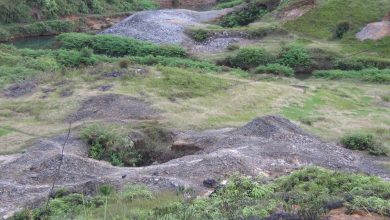100 years of faith & integrity
Laban Naamghar, a divine space for city’s Assamese community, is celebrating centenary year of its existence

The Naamghar in Laban is not only a symbol of Assamese tradition and religious beliefs but has been a confluence of various cultures. Established in 1935, the current Naamghar Complex had a humble beginning. “The Naamghar is in its present shape for the untiring efforts of the devotees. A few of the forward-looking and artistic-minded members of the Namghar committee have also contributed to its development in the right direction,” wrote Dhyanada Charan Sharma in his autobiography, The Person and His Oeuvre.
When the Laban Assam Club was formed in 1896, the Assamese community came together to form a society that would later organise festivals and cultural programmes. The community Durga Puja started in 1922 from the premises of Kamala Kanta Barooah’s residence in Laban. The quaint Assam-type house still exists as a witness to a part of Shillong’s history.

“In the year 1922, about two months before the Durga Puja, a few youths, working at different government offices, namely (Late Faguna Kalita, Late Kusharam Kalita, Late Dukhiram Kalita and others) approached Late Sarada Devi, the wife of Late Kamala Kanta Barooah and appealed to her, ‘Mother! If you give permission, we would like to celebrate Sri Sri Durga Puja too in your compound.’ Hearing this, Late Sarada Devi, without waiting for the permission or consent from her husband, instantly replied, “It’s a very good idea. We shall be very happy if you can organize the Puja here. Let me contribute rupees fifty from our side, and pray to Go
d Almighty to shower her blessing for the success of your noble mission,” reminisced Sharma, who was associated with the Naamghar committee, in his book.
The puja venue was later shifted to the Naamghar Complex, which is celebrating 100 years of the major festival.
The Durga idol and other puja paraphernalia were brought from Guwahati and all the “transport companies plying on the Guwahati-Shillong road carried the idols free of cost”.
Dhrubajyoti Chakraborty, a member of the Naamghar executive community, said each year, an individual donates the idol of Goddess Durga and the list of names of contributors has been prepared till 2035.
Before the Naamghar was established, naam-prasanga (prayers) was held in Assamese households on rotation basis.
“During that time there were some 20/30 Assamese households in the Laban area and each one of them would eagerly wait for their turn, to organize the naam-prasanga in their respective homes expecting blessing from the gathering. In brief, the society of the Laban Naamghar started blooming around 1920,” Sharma wrote.
Today, the naam-prasanga is organised once every week where women from the community participate.
The concept of namghar was propagated by Assamese religious leader, philosopher and social reformist Srimanta Sankardev in 15th century. Though his original teachings do not talk about idol worship, the Laban Naamghar’s speciality is that it follows both Sankardev’s philosophy and has idol worship. The three temples — those of Lord Ganesha, Lord Shiva and Lord Vishnu — inside the complex have made Naamghar “a holy shrine of Shillong town as people from all faiths of Hinduism, such as Vaishnabh, Shakta, Shaiva and Ganapatya, gather here to offer their prayers”.
Noted Assamese author Kanchan Barua designed the Naamghar structure and an emblem for it. In fact, it is among a few naamghars with an emblem of its own. The emblem has the words ‘Satyang Param Dheemahi’ from the Bhagawat Gita.
“During those days in Shillong, among the Assamese service holders there were not many who were in high position and they did not have sufficient monthly income too. Still, they started thinking about constructing the Naamghar after the land was purchased. To make this dream come true, the Hindu people living in Shillong would have to contribute at least 15% of their monthly income towards this project,” Sharma’s book informs.
Swarup Sharma, another executive committee member and son of Dhyanada Charan Sharma, remembered the communal integrity and camaraderie that the divine complex nurtured. “Old Muslim families in the town and tribals belonging to Seng Khasi faith would be part of the Durga Puja. Even today, there is an open invitation for all to come and have bhog on Navami, the third day of the puja,” said 50-year-old Sharma.
A unique feature of the Durga Puja at Naamghar is that there is no ritual of anjali. In the initial years, there was no practice of kumari puja and this was introduced about 25 years ago.
About the architecture of the complex, Sharma said Naamghar’s maintenance is done without altering the design of the structures.
However, with time, the Assamese community in the hill city has diminished making it difficult for the Naamghar committee to maintain the complex. “We do maintain it regularly with the donations from members. But I do not know about the future. Many Assamese have left Shillong and many are still moving out,” pointed out committee vice-president Dr Asim Das.
The hall inside the complex is rented out for wedding receptions and other functions and the money goes to the committee fund that also helps in the maintenance of Laban Naamghar.
On the celebrations for the centenary year, Das said the committee was yet to chalk out a plan. On March 12, the CRPF inaugurated a causeway at the entrance of the community hall. This was part of the CRPF 67 Battalion’s civic action programmes.
As Laban Naamghar prepares for the centenary of the Durga puja, it becomes imperative to save the divine space not only for the Assamese community but also to preserve the integrant of Shillong’s history. There is also a need for rejuvenating the spirit of unity and integrity by encouraging and organising more cultural events involving youths from various communities.
~Team Sunday Monitor





